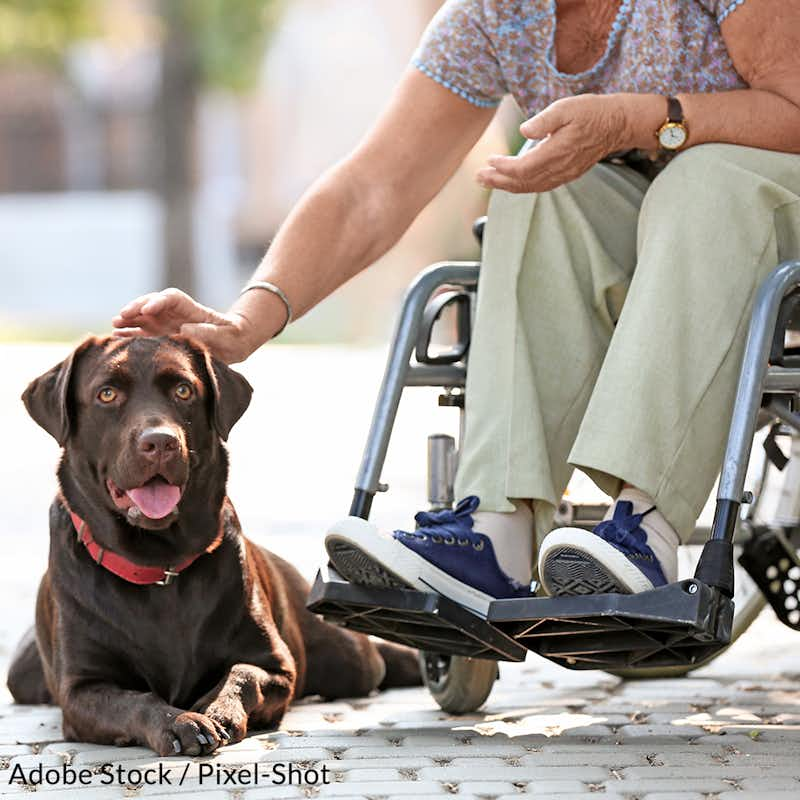Take the Assistance Dog Pledge
6,271 signatures toward our 50,000 Goal
Sponsor: The Animal Rescue Site
Assistance dogs are trained to provide critical help to their handlers. Take the pledge to respect their space!

Service animals are defined as dogs that are individually trained to do work or perform tasks for people with disabilities1.
To put it simply, service animals are working animals, not pets. A service dog is a dog with a job. The exact job the dog performs depends entirely on the disability they have been trained to assist with.
- Assistance dogs help the visually impaired by guiding them through crowds, around obstacles and stop at stairs and crossings2.
- Dogs assist people in wheelchairs by helping them pull the wheelchair up a ramp, press a button on automatic doors, pick up dropped items and even bring objects that may be otherwise out of reach to their owner2.
- Assistance dogs help people with epilepsy by sensing when a seizure will occur and alerting their handler2.
- Dogs assist veterans with PTSD by nudging, bringing medication or even circling the owner in a crowded area to create personal space2.
A service dog often becomes an extension of their handler. The two work as a team. Even so, if you want to speak or communicate with the dog, always approach the handler first2. If the handler says no when you ask to pet the dog, don't be offended. And, never give the dog commands; allow the handler to do so3.
It is important to give assistance dogs their space. Try to contain your excitement when near an assistance dog so as not to detract from their work. While service dogs may be well-trained to tune out distractions, it can still make it hard for them to concentrate if you are trying to get their attention through noise, gestures, or by reaching out to touch them4.
Since the American with Disabilities Act (ADA) does not mandate that service dogs need to wear special harnesses or even carry identification, it's best to assume that every dog you meet is a service dog unless the owner states otherwise2.
Taking the Assistance Dog Pledge will go a long way to helping these animals perform the crucial duties they were trained for. Sign the pledge below and take a stand for Assistance Dogs!
- U.S. Department of Justice, Civil Rights Division, Disability Rights Section (12 July 2011), "Service Animals."
- Guide Dogs of America (2021), "Best Practices When Around a Service Dog."
- Guide Dog Foundation for the Blind, Inc., "Etiquette For Guide And Service Dogs."
- April Saylor, Daily Paws (28 August 2020), "Here's Why It's Not OK to Pet Service Dogs (and What You Should Do Instead)."
The Pledge:
As a lover of all dogs and an advocate for their use in helping people live with greater freedom, I hereby pledge to:
- Respect the fact that assistance dogs and their handlers work as a team.
- Approach all dogs as if they are assistance dogs, taking care not to distract them from helping their handler
- Always ask the handler first if it is OK to approach a dog
- Never give commands to a dog I've just met unless the dog's handler allows it
Pledged by,